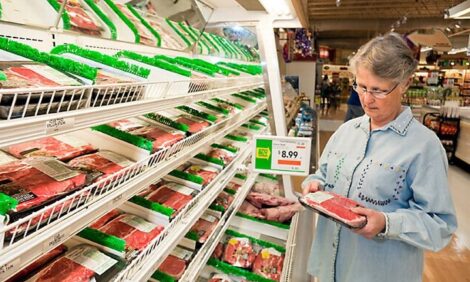



Why is UK Lagging Behind on On-farm Anaerobic Digestion?
ANALYSIS - The use of on-farm renewable energy and anaerobic digestion is commonplace in Continental Europe, particularly in countries such as Germany and Denmark, but some countries such as the UK are lagging behind, writes Chris Harris.Although there have been targets set to have 1000 on-farm AD plants by 2020 in the UK at present there are just about 100 plants that are outside the water industry.
However, the growth in the popularity of the technology is starting to take off and the numbers of on-farm plants are growing, according to Charlotte Morton, the chief executive of the UK's Anaerobic Digestion and Biogas Association.
Speaking at the recent Energy Now Expo and conference, Ms Morton said that anaerobic digestion offer huge value to the farming community.
The benefits are not only that it can generate biogas for on-farm us but it can also feed power into the grid to offer additional income to the farmer.
At the end of the process there is the digestate that is left that can be used on the fields.
She added that there are also benefits in growing crops for anaerobic digestion as well as just using the slurry and manure from dairy, pig or poultry farms.
"The industry is beginning to recognise that anaerobic digestion is flexible in both form and scale," she said.
"Different farms have different needs and will look for different technology to address those needs."
At present in the UK of the 100 AD plants, about half are on farm and it is projected that by 2020 the total will be just 120. In Germany the number of plants is approaching 8,000.
Part of the problem with the slow growth in the number of anaerobic digestion plants on farm is that many farmers do not believe they have the scale of operation to accommodate such forms of renewable energy generation.
However, Angela Bywater, the business development manager at Methanogen, said that a dairy farmer with a herd of just 130 cattle could generate 13KW of power -enough to power the farm and with added feedstock that power generation could be lifted to 50KW.
The reason why countries such as Denmark and Germany have forged ahead in the field of anaerobic digestion is because of the backing the sector and technology has received from the respective governments.
Ms Bywater said that in Germany there was an average grant of 40 per cent funding to build a plant and more than 60 per cent of the AD plants had received 45 per cent funding. She added that the Danish government is also going to be funding these plants more.
Funding in Germany and Denmark has been around for some time with farm gas funding starting in Germany in the 1970's and polluting control grants appearing in the 1980s and 1990s. The governments in those countries that embraced anaerobic digestion as a means of power and pollution control also initially offered farmers and those plant operators appealing tariff rates for feeding the power into the grid.
For the UK, the first signs of growth in the sector appeared when Feed in Tariffs and double ROCs (Renewables Obligation Certification) appeared in 2010.
"The UK was in the same place as Germany in 1992 with not much government support," Ms Bywater told the Energy Now conference.
"But the UK has not progressed much."
She said much of the problem for the UK has been with the complexity of the legislation, particularly over the definition of waste and what can and cannot be used in AD plants and then spread back on to the land as fertiliser in the form of digestate.
She said that on-farm schemes have been hampered by the planning regulations, which vary across the country and also through funding because the Green Investment Bank has shown little interest in on-farm schemes.
She added that there is also complexity n the way that on-farm systems can be connected to the grid in the UK and farmers also have the challenge of passing on the capital cost of the technology in a developing market place.
Not only is the UK slow in taking up the financial rewards of anaerobic digestion plants, but it is also missing the environmental benefits, but Germany and Denmark have given financial support to transport slurries into anaerobic digestion to mitigate environmental issues.
But Ms Bywater said the farm is an excellent place for and AD plant for the nutrients to be put back onto the farm land.
She said there is a big impact from nitrates, phosphates, ammonia, nitrous oxide and methane emissions from slurry, but if they are put into anaerobic digestion, there are environmental benefits and then the digestate displaces the use of mineral fertilisers.
At present, though, the environmental benefits afforded by anaerobic digestion in mitigating greenhouse gas emissions are not recognised in the Feed in Tariffs or grants offered in the UK.
Ms Bywater said that if they were, the FiT of 14.7p would rise to 77.3p.
She added that the use of digestate as a fertiliser also offers other benefits such as less water use, improved slurry handling, fewer trace elements as well as nitrates, phosphates and potassium and a fertiliser that does not hinder clover growth like some synthetic fertilisers.
The use of the digestate also offered faster re-grazing and lower production costs because of the use of home produced energy and fertiliser.



